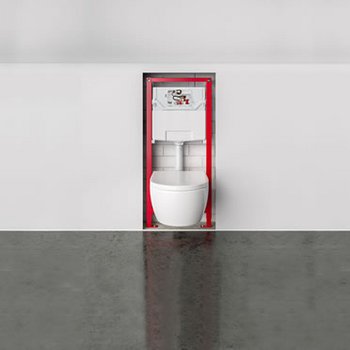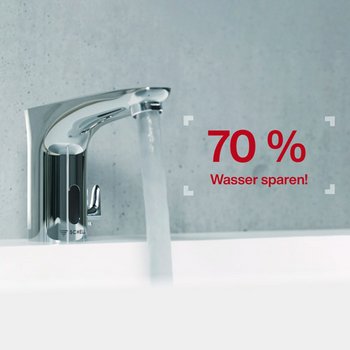How we can cut our costs around the home.
6-minute read
All of us are affected by the high energy prices and wondering how we can make our homes more efficient – whether as tenants or owners. Read on for our hand-picked tips to saving money.
Reducing heating costs
Heating costs in buildings with poor insulation
Heat is not trapped effectively in buildings without good insulation. As a result, it can be lost to a cold outside environment. In these kinds of buildings, it therefore makes sense to reduce the room temperature from roughly 21–22 °C to only about 17 °C during the night and, where possible, during the day in rooms that are not used very often. This saves about 7–8% of energy compared with continuous heating at the same temperature. However, temperatures should not be allowed to drop below this 17 °C limit and regular airing of rooms with windows fully open is also important to avoid mould growth.
Electronic radiator thermostats?
Another option for reducing costs is not setting the temperature for the heating centrally – for example, by using a wall-mounted central thermostat with a daily programme – but to set temperatures more conveniently by room and by time of day. Electronic radiator valves are available to do this. These valves are controlled individually by time and date programs. Programming can be done on the valve itself or with an app and each valve costs about EUR 50. Fitting the valve is easy: the old radiator valves can be simply unscrewed without any tools and replaced with the electronic version. This can be done without having to drain the water out of the heating system. However, this kind of investment is only worth making if there are fixed periods of time during the week when individual rooms also only need to be heated to about 17 °C during the day.
Reducing costs for water, waste water and hot water
The following tips will be equally useful to people living in houses with or without good insulation. The aim here is to reduce the costs for water, waste water and hot water without introducing health risks from pathogens in drinking water.
Hot water temperatures with a central hot water system
First of all, let’s look at the temperatures with a central hot water system. If were talking about no more than two residential units, then the hot water temperature must not drop below 50 °C at any tapping point. For more than two residential units and a central hot water system, each tapping point in the building must reach at least 55 °C. In this case, protecting health is more important than the justifiable interest in saving energy.
Deactivating ‘Legionella protection’
In many central hot water systems, ‘Legionella protection’ is activated by default – which runs once a week or in some cases, even on a daily basis. This is not necessary for good hygiene and generates additional energy costs. For a hot water system running at temperatures of 50 °C or 55 °C, Legionella bacteria are dead anyway – and they won’t become ‘deader’ at 70 °C. This kind of Legionella protection function creates additional, avoidable costs while unnecessarily stressing the components in the hot water system.
Decentralised instant water heaters and boilers
For decentralised instant water heaters, there are no requirements in terms of temperatures, because anyone can set the temperature just as they like. From a cost perspective, however, they should be set up so that they do not heat up mains water first before then reducing its temperature by mixing it with cold water at the tap. Accordingly, the control on the instant water heater should be turned down until at a ‘warm’ position where hand-hot drinking water exits the tap. This keeps electricity costs to a minimum.
Another cost driver can be found in the kitchen, where uninsulated boilers over the sink often hold hot water that is only occasionally needed for washing up. Buying a timer switch is a good idea here: this controls the electricity supply to the boiler so that it is only active during daytime hours.
Check consumption at wash basin taps
Many wash basin taps consume far too much water, running at 8 to 10 l a minute. Tap consumption is easy to test yourself: just take a 1 l measuring jug from the kitchen, put it under the tap and use a stopwatch to time how quickly it fills. If the jug only takes 7 seconds (or is even faster) to fill, then the tap is using more water than necessary, probably around 8.5 l or even more a minute. For day-to-day washing, however, 5 l a minute is fine. This cuts hot and cold water use for hand washing by around 40%!
Water consumption at wash basins is easy to optimise and costs nothing: you simply move the lever left to the hot water side and then rotate the regulating angle valve until the flow is around 5 l a minute. Your 1 l measuring jug should be full after 12 seconds now. You then repeat this procedure for cold water.
If a wash basin is used a lot during the day, then even 3 l per minute can be set, which would mean your 1 l measuring jug is full after 20 seconds. However, this is really the absolute minimum, since otherwise, not enough water will be used and, in some circumstances, pathogenic bacteria like Legionella can then grow in the drinking water. This is also why you should not make any of these changes for rarely used taps like in guest WCs, for example.
Check consumption at shower fittings
You do need enough water to enjoy a decent showering experience, but showers do consume the most hot water in a household. A good compromise here is to buy a hand shower from leading brands like hansgrohe, which need 6 l a minute, instead of the typical 9 to 12 l a minute (or even more) needed by others. This lets you cut your hot water costs by at least 40%. Replacing a hand shower requires no tools and no professional expertise.
Summary
All of us can cut our heating costs and even without compromising on our typical comfort zone of around 21 to 22° C. Uninsulated old buildings offer the greatest potential savings here. In terms of costs, water, wastewater and hot water also offer plenty of room for saving energy. All too often, our wash basin taps and shower fittings use a lot more water than is necessary. Without compromising on comfort, costs can be immediately reduced here. And a look at the SCHELL catalogue shows that our company has been making these kinds of cost-cutting taps and fittings for many years!

![[Translate to English:] [Translate to English:]](/fileadmin/_processed_/1/b/csm_symstemloesungen_e2_thumb_6bca267f26.jpg)























![[Translate to English:] [Translate to English:]](/fileadmin/user_upload/images/menu/menu_service_downloads_broschueren.jpg)








![[Translate to English:] [Translate to English:]](/fileadmin/_processed_/7/7/csm_menu_unternehmen_ueber-schell_awards_f6cec25b1d.jpg)
![[Translate to English:] [Translate to English:]](/fileadmin/_processed_/a/0/csm_menu_unternehmen_ueber-schell_wasser-sparen_41036d2dd9.jpg)





